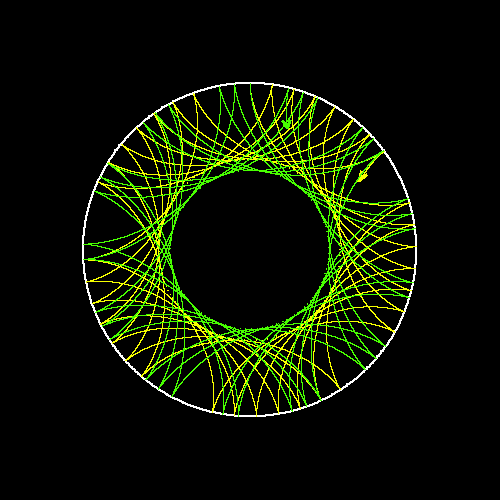

The green wave penetrates a little deeper into the Sun, than the yellow wave and therefore senses conditions in a slightly larger area. The difference in frequency between the two oscillations corresponding to the green and the yellow wave therefore says something about that area that only the green wave passed through.
In the same way, different oscillations reach different latitudes.


It turns out that oscillations with m = l are concentrated close to the equator, while oscillations with low m reach high latitudes. By studying oscillations with different m we can study how conditions in the Sun vary with latitude. This is particularly important for measuring the internal rotation rate of the Sun.
Expressed more precisely the observed frequencies are integral measures of the sound speed along the path of the sound waves. When we want to determine the sound speed itself, we need to invert an integral equation, which is a well-known, but very difficult problem in mathematics. Therefore we spend a lot of time developing effective mathematical techniques and computer software to invert the measured oscillation frequencies.
Some of the results we have obtained are shown on this page.